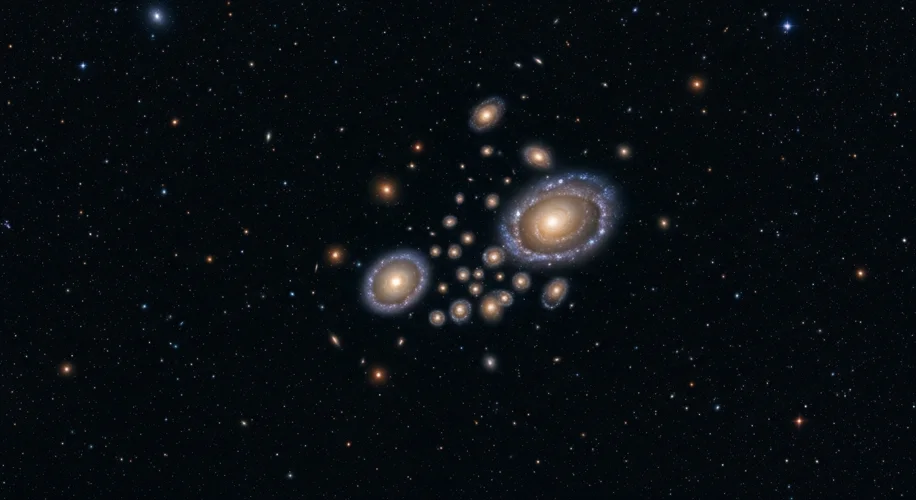Webb Telescope Spots 300 Mysterious Lights: Are They Galaxies or Something Else?
Today, September 1st, 2025, I’m buzzing with excitement because NASA’s James Webb Space Telescope has made a discovery that’s got astronomers scratching their heads – and I love it when science challenges our understanding!
Webb has identified around 300 galaxies that seem to have formed much earlier and are much more massive than our current cosmological models predict. Imagine looking at a baby picture and seeing someone who already looks like a fully grown adult. That’s the kind of surprise we’re talking about here!
What Exactly Did Webb Find?
The universe is about 13.8 billion years old. We have a pretty good idea of how it evolved from the Big Bang, forming stars and galaxies over vast stretches of time. Webb, with its incredible infrared vision, can peer back further into cosmic history than ever before. It’s like having a super-powered pair of glasses that can see the universe when it was just a toddler.
What it found were galaxies that appear to be incredibly bright and already quite massive when the universe was very young – perhaps only a few hundred million years after the Big Bang. These aren’t just a few oddballs; we’re talking about hundreds of them.
Why is This a Big Deal?
Our current best models of cosmology, which describe the evolution of the universe, suggest that it takes time for gravity to pull matter together to form stars and then galaxies. Small structures are supposed to form first, merging over billions of years to create the larger galaxies we see today.
These newly found galaxies, however, seem to have skipped a few steps. They appear to be as mature as galaxies we typically see much later in the universe’s history. This suggests that either:
- Galaxies formed much faster than we thought: The processes that build galaxies might be more efficient or work differently in the early universe.
- Our understanding of cosmic time is incomplete: Perhaps our timeline for cosmic evolution needs a serious revision.
- There’s something fundamentally new about these objects: It’s even possible they aren’t exactly what we assume them to be, though “galaxy” is the leading interpretation.
Connecting the Dots: Webb and Our Cosmic Story
This discovery is a fantastic example of how new observational power can push the boundaries of science. It’s not a failure of our models, but an opportunity for growth. As a scientist who studies complex systems like our climate, I’m always inspired by how new data can refine our understanding. Just as we refine climate models with new satellite data, cosmologists will now work to understand how these early galaxies could exist.
It’s moments like these that remind us how much we still have to learn about the cosmos. The universe is constantly revealing new secrets, and the Webb Telescope is our most powerful tool yet to uncover them. It’s a thrilling time to be looking up!
Did you know that the universe is constantly surprising us? This is why I’m so passionate about science – there’s always more to discover, and each discovery opens up even more questions.

